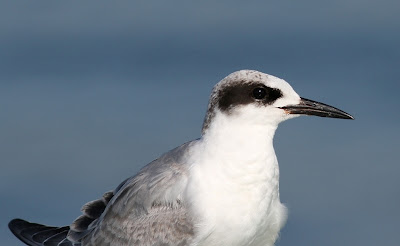Political borders are a funny thing in birding. Whether town, county, state, or continent...most of our listing areas are determined by these boundaries. For those of us who keep a Connecticut state list or reside on the Avian Records Committee of Connecticut, we frequently scrutinize bird status and distribution on a relatively small scale. The sample size for a state like Connecticut pales in comparison to the northeastern US region as a whole, for example. So we have perhaps more "quirks" in our avifauna's history than a larger state might have. For instance, Connecticut has ZERO records of Townsend's Warbler (widely considered our #1 biggest miss), but New York has about 20. If CT and NY were formed as one state, Connectiyork would have about 20 records and most birders living in what is now Connecticut would have it on their Connectiyork lists and would hardly consider it a statewide "blocker." Given that we're entering the heart of the western vagr









